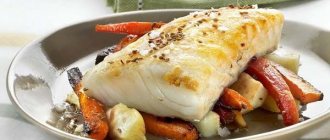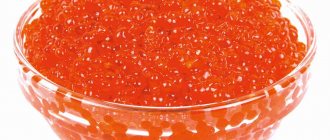- How does it affect blood pressure?
- General benefits of pumpkin for hypertension
- Recipes for blood pressure
- Pumpkin seeds and oil
- Cautions
Pumpkin contains many vitamins and minerals and is also low in calories, so it is often used in folk medicine, in particular to normalize blood pressure. For the same purposes, you can also take vegetable seeds and their oil. Find out below what effect pumpkin has on blood pressure, and what recipes you should pay attention to.
How does it affect blood pressure?
Pumpkin is a great helper in the treatment of cardiovascular diseases, including such vascular problems as arterial hypertension. The fact is that it contains antioxidants that have the following properties:
- reduce the level of “bad” cholesterol in the blood, high levels of which can lead to a heart attack;
- have a diuretic effect, removing excess salt and fluid from the body;
- cleanse the body of toxins and waste that cause heart failure.
Thanks to these actions, pumpkin helps lower blood pressure, so it can be used specifically for hypertension. It can be constantly included in various dishes to avoid pressure surges. This will improve blood circulation and supply the brain with oxygen.
It is important to note that pumpkin is not a medicine that will completely cure hypertension. It is advisable to use it to maintain a stable state of health and prevent complications of the disease.
Composition and properties
Pumpkin contains a complex containing vitamins and microelements, which are needed to maintain the functions of internal organs. For example:
- carotene;
- vitamin T, which affects metabolic processes, as well as A, B1, B2, B6, C, E;
- nicotinic and other acids;
- salt;
- various microelements;
- antioxidants that cleanse the body of intoxication and toxins.
Regular consumption of freshly squeezed juice or raw pulp is a preventive measure against most heart diseases, including heart attack. In addition, the use of pumpkin dishes:
- Improves digestion.
- Useful for excess weight as they are a dietary product.
- Increases acidity, reduces pain and cleanses the stomach.
- Improves vision.
- Raises hemoglobin, has a positive effect on blood clotting.
- Relieves inflammation. Used to treat skin diseases.
- Affects the dissolution of stones in urolithiasis.
- Strengthens the immune system, improves metabolic processes.
- It is used as a prophylactic agent in the treatment of tuberculosis.
- Increases testosterone levels, prevents the appearance of prostatitis.
- Lowers blood pressure in hypertension, reduces cholesterol levels.
- Used to treat diseases of the heart and blood vessels.
General benefits of pumpkin for hypertension
Pumpkin has a composition similar to many multivitamin complexes. So, it consists of calcium, iron, potassium, vitamins B, A, C, D, E, PP, F and T. In addition, it is a low-calorie product - no more than 100 kcal per 100 g of pulp. This means that it can be used on a regular basis even by people who have problems with excess weight.
Thanks to its composition, pumpkin will help normalize blood pressure in hypertension and contribute to the following processes:
- improving digestion and metabolism due to fiber content;
- relief of pain in the presence of inflammatory diseases of the gastrointestinal tract with high acidity;
- increasing hemoglobin levels and improving blood clotting, which is especially useful for people with anemia and anemia;
- improved visual acuity thanks to carotene;
- dissolution of stones in urolithiasis;
- strengthening the body's defenses, since pumpkin is a natural immunomodulator.
To get the full benefit of pumpkin, it can be consumed either fresh or boiled. In addition, you can prepare juices, decoctions and infusions. At the same time, you should not abuse pumpkin remedies, since in this case you can provoke disturbances in the functioning of the stomach and pancreas.
Beneficial features
Pumpkin grows in almost every garden and is actively used as a tasty ingredient in many dishes. But not everyone knows how useful it is and what diseases it can cure. This fruit is rich in vitamins and microelements necessary for the good functioning of the human body, namely:
- calcium;
- iron;
- potassium;
Pumpkin is rich in vitamins B, A, C, D, E, PP, F, T
- magnesium;
- vitamins of group B, A, C, D, E, PP, F, T.
This composition is the envy of many multivitamin complexes, consisting mostly of chemical components. In addition, pumpkin is low in calories (about 20 kcal per 100 g) and consists of 90% water. Thanks to this, it can be eaten by almost everyone, including small children and pregnant women.
It has the following beneficial properties:
- Improves digestion due to its high fiber content. It is useful to eat the pulp for people who are overweight - it is a completely dietary product. For inflammatory diseases of the gastrointestinal tract with high acidity, it helps relieve pain and cleanse the stomach.
- Carotene, which is contained in the vegetable, has a beneficial effect on vision. The benefits in this case are almost as good as carrots.
- The high iron content makes pumpkin recommended for people suffering from anemia and anemia. It promotes blood clotting and increases hemoglobin.
- The anti-inflammatory effect is actively used in the treatment of skin diseases (eczema, rashes, burns, wounds) and cosmetic problems (acne, age spots, wrinkles).
- For urolithiasis, the raw fruit helps dissolve stones. Its diuretic effect allows it to be used in the complex treatment of kidney and bladder pathologies.
For urolithiasis, the raw fruit helps dissolve stones
- It is a natural immunomodulator that strengthens the body's defenses. It improves metabolism and tones the entire system.
- Pumpkin seeds help well against helminths and parasites that infect the intestines, especially in children.
- The oil is actively used for the prevention, and sometimes treatment, of tuberculosis.
- The high zinc content allows the product to be used to maintain men's health. Thanks to it, testosterone levels increase and prostatitis is prevented.
- Insomnia, weakness, and low performance are easily eliminated through constant consumption of pumpkin juice.
- Cardiovascular diseases have been successfully treated with pumpkin, especially cholesterol and hypertension.
Absolutely everything in a pumpkin is useful - pulp, seeds and even the skin. The vegetable can be consumed raw, boiled, baked, prepared decoctions and infusions, or drink freshly squeezed pumpkin juice.
Recipes for blood pressure
In folk medicine, they offer the following recipes with pumpkin to normalize blood pressure and prevent jumps in its levels:
- Raw pulp . If there are no problems with your stomach, you can eat raw pumpkin. Initially, the daily norm is 20 g of pulp, which must be eaten before meals. Gradually increase the volume to 150 g, dividing into 3 doses. Taking the raw pulp will help not only against hypertension, but also against arrhythmia, bronchitis and atherosclerosis.
- Juice . To prepare it, just grate the pulp on a medium grater, and then squeeze out the juice using gauze. For hypertension, it is enough to take 100 ml of freshly squeezed juice every day. If its taste seems too tart, you can dilute it with the same amount of boiled cold water or another juice, such as apple juice.
Pumpkin juice will help eliminate insomnia and weakness, as well as improve performance.
- Porridge with lemon . Pass 500 g of raw pumpkin pulp with 1 lemon through a meat grinder without peeling. Add 0.5 kg of sugar or honey to the resulting pulp, mix and store in the refrigerator with the lid closed. There is 1 tbsp. l. before eating. With long-term use, you can normalize blood pressure for a long time.
- Stem decoction . If you collect dry cuttings in the fall, you can prepare a decoction from them. To do this, pour 2-3 stems (about 20 g) with a glass of water and boil for 2-3 minutes. Cool the broth and drink throughout the day. It has a strong diuretic effect, so it lowers blood pressure and also relieves swelling in heart and kidney diseases.
- Pulp with honey . The recipe is especially effective in cases of chronic hypertension. You need to take a small pumpkin, cut off the top and scoop out all the contents with a spoon, combine with 1 liter of honey, mix and return to the “pumpkin”. Transfer to a cool, dark place and leave for 14 days. Eat 50 g twice a day.
- Porridge with raisins and wheat . You need to grind 200 g of pulp, combine with 50 g of raisins and the same amount of sprouted wheat. Mix and add 1 tbsp. l. honey The mixture can be crushed with a blender to obtain a homogeneous mass. You need to eat it on an empty stomach, 1 tbsp. l. per day for a month.
If it is difficult to drink pumpkin juice, a hypertensive patient can prepare a milkshake based on the vegetable according to the recipe from the video:
Pumpkin seeds and oil
For hypertension, you can use both pumpkin seeds and their oil, as they help stabilize blood pressure.
Seeds
They contain vitamins B, K, C and E, as well as many minerals - 100 g of seeds contain 80% of the daily value of iron and manganese, 50% of the daily value of potassium, copper and zinc. In addition, the composition contains sodium, calcium and selenium. Thanks to this, the seeds contribute to:
- strengthening the immune system;
- improvement of mental activity;
- activation of the gastrointestinal tract;
- beneficial effects on the musculoskeletal and reproductive systems;
- increasing visual acuity.
To get all the benefits, hypertensive patients can consume up to 100 g of raw seeds. This is also enough to stop pressure surges. It is important to note here that the seeds cannot be fried, since after heat treatment they lose all their positive effects.
The seeds contain various acids, so they can damage tooth enamel. So, people who have dental problems should avoid them.
Oil
Pumpkin seed oil, which can be purchased at the pharmacy, is also useful for blood pressure. It contains all the vitamins and microelements that are found in the seeds, but does not cause slagging in the body. You can take 1 tbsp of oil. l. on an empty stomach after waking up or prepare the following remedy:
- Moisten 50 dried apricots and place on a paper towel to dry.
- Transfer the dried apricots to a bowl or jar and pour in 200 g of oil.
- Infuse the product for 7 days with the lid closed.
You can take the mixture 1 tbsp. l. on an empty stomach or use as a salad dressing. It will help not only normalize blood pressure, but also strengthen vascular walls, avoid arrhythmia and the formation of blood clots.
The calorie content of 100 g of seeds (100 ml of oil) is about 550 kcal, so they are unacceptable for overweight hypertensive patients, because to normalize blood pressure, first of all, they need to lose weight (it has been proven that every extra kilogram is plus 1 mm Hg) .
Cautions
Despite all the benefits of pumpkin, diabetics should use it with caution, as it contains a lot of sugar and carbohydrates. In addition, it is contraindicated if there is an ulcerative lesion of the stomach and duodenum. The fruit is prohibited in its raw form in the presence of intestinal colic and low stomach acidity. Of course, pumpkin is absolutely contraindicated in case of individual intolerance.
The indications for which pumpkin should not be consumed do not include pregnancy. On the contrary, it is useful for a woman in this position to eat vegetables, since they contain vitamins and minerals that are necessary for the normal functioning of the body. In some cases, it will even help cope with nausea and severe toxicosis.
If there are no contraindications, pumpkin can be safely used to normalize high blood pressure, but you should not overuse it, especially in the presence of chronic diseases that require competent basic treatment.
So, pumpkin can be used for hypertension, as it helps to smoothly lower blood pressure, remove “bad” cholesterol and prevent a hypertensive crisis. Pumpkin can be eaten raw or used to prepare medicinal porridges and drinks. If you are not overweight or have dental problems, you can also treat yourself with pumpkin seeds and oil.
Precautionary measures
The seeds are not recommended for people who are prone to weight gain.
Constant, large quantities of pumpkin seeds and pumpkin juice under pressure can lead to gastric problems and cause other harm to health, especially with chronic diseases. You should remember the precautions and take precautions. Pumpkin seeds should not be consumed regularly, as the high acid content can damage tooth enamel. If you have problems with excess weight, you should opt for pulp. The seeds are high in calories.
Contraindications for consuming pumpkin include bloating and stomach cramps. Therefore, after eating a raw vegetable, you should not drink cold liquid. Pumpkin is not recommended for use in diabetes mellitus. Juice and raw vegetables are contraindicated in patients with intestinal problems, as well as those who do not accept the vegetable. There are few contraindications and rules for using the vegetable. Pumpkin contains a vitamin and mineral complex that is necessary to maintain normal functioning of the body. It should be in every person's diet. And for hypertension it is indispensable.











